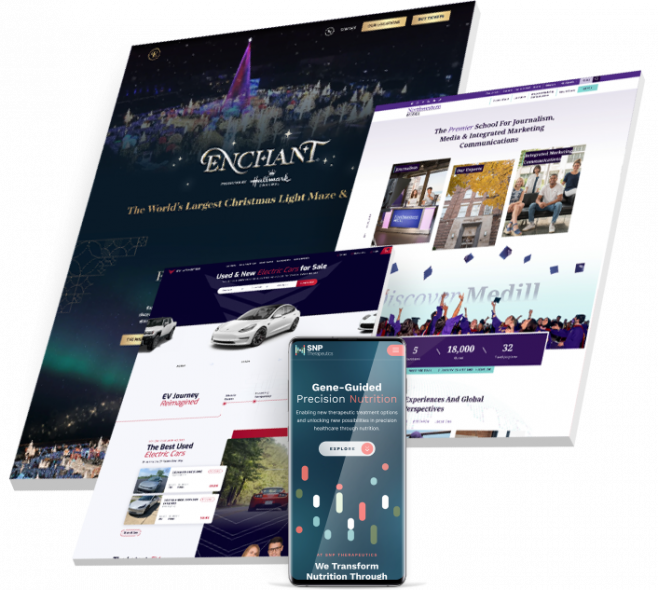Structure User-Friendly Interfaces: Best Practices in Website Design
Wiki Article
Comprehending the Role of Responsive Layout in Modern Web Site Development
In today's electronic landscape, responsive design is no much longer a high-end yet a necessity in website development. The value of responsive layout extends beyond individual experience-- it is additionally an essential aspect in search engine optimization and ease of access.Importance of Responsive Layout
In today's digital landscape, the value of receptive layout in internet site advancement can not be overemphasized. As customers significantly rely upon a variety of tools-- ranging from desktop to smart devices and tablets-- making certain a seamless user experience across all platforms has actually ended up being vital. Receptive style enables websites to instantly readjust their format and capability based upon the display dimension and alignment of the gadget being utilized. This flexibility improves customer interaction and satisfaction by offering constant access to material without needing hand-operated modifications such as scrolling or zooming.Additionally, receptive style is essential for seo (SEO) Online search engine like Google focus on mobile-friendly websites in their search engine result, suggesting that a receptive style can significantly impact a website's visibility and position. This optimization not only enhances the user experience however additionally drives organic traffic and enhances the capacity for conversion and revenue generation.
In enhancement, receptive layout supplies businesses an economical solution by getting rid of the need for multiple versions of a site. By streamlining web growth processes and minimizing maintenance efforts, business can allot resources a lot more efficiently, eventually resulting in boosted roi. Therefore, receptive design is vital in today's affordable electronic atmosphere.
Key Elements of Responsive Layout
To properly execute receptive style, it is vital to concentrate on a number of crucial elements that make certain optimal functionality and individual experience throughout diverse tools. Among the fundamental components is the flexible grid design, which enables designers to create liquid grids that automatically readjust to different display dimensions. This makes sure that content keeps proportionality and readability, despite the gadget being used.
Additionally, touch-friendly navigating is indispensable for receptive style. Applying quickly tappable switches and user-friendly gesture controls boosts functionality on touchscreen devices. Focusing on efficiency optimization is additionally critical, as it boosts packing times and lowers bounce rates, particularly on mobile connect with variable rate.
Lastly, utilizing a mobile-first method makes certain that the style is initially enhanced for smaller screens before expanding to fit desktop computers. This approach ensures that vital functionality and aesthetics are protected throughout all platforms, inevitably boosting the general user experience.
Effect On User Involvement
Responsive style significantly influences individual involvement by review enhancing availability and contentment throughout various devices (Website Design). By ensuring that a site's layout adapts flawlessly to various screen dimensions, receptive style enables customers to accessibility material easily, whether they are making use of a mobile phone, tablet, or desktop computer .Additionally, receptive style adds to quicker web page loading times, which is crucial for retaining individual rate of interest. Users are much more inclined to abandon a site if it takes as well lengthy to lots, particularly on mobile devices. By enhancing performance for diverse systems, responsive style decreases packing delays, keeping individuals engaged and lowering bounce prices.
Search Engine Optimization Benefits of Responsive Design
While boosting individual experience is a primary goal, receptive style likewise plays a vital duty in boosting a website's search engine optimization (SEARCH ENGINE OPTIMIZATION) Receptive design makes certain that a website adapts to various screen sizes, getting rid of the demand for separate mobile and desktop computer variations.Additionally, responsive design aids in faster web page filling times, a vital consider search engine optimization. Online search engine prefer internet sites that fill rapidly, acknowledging that individuals are more probable to desert sites that take too long to present. By using receptive layout, programmers can improve and optimize pictures web content, ensuring efficient loading and improved search engine rankings.
Additionally, a cohesive URL structure across devices streamlines the indexing procedure for online search engine, improving crawl effectiveness. This uniformity in URLs strengthens a site's authority and trustworthiness, bring about boosted presence in search results. In summary, receptive design is not just a fad however a fundamental part of SEO approach, guaranteeing websites are both easy to use and internet search engine suitable.
Executing Responsive Style Approaches
In the realm of contemporary internet growth, applying receptive layout methods is akin to crafting a functional canvas that adjusts effortlessly to various display dimensions. One more crucial tactic involves employing media queries, which allow programmers to apply different styles based on the qualities of the tool, such as width, height, and resolution.Responsive pictures and media are also important components. By using methods like CSS media inquiries and the HTML 'image' component, developers can serve appropriately sized images based upon the individual's tool, maximizing load times and enhancing user experience. Additionally, the unification of fluid typography makes sure that message is understandable and visually pleasing on any type of screen, achieved through scalable units like 'rem' and 'em'.

Conclusion
Receptive style constitutes an important facet of contemporary content internet site advancement, considerably boosting individual experience across an array of devices. Inevitably, implementing responsive design techniques guarantees improved accessibility and functionality, rendering web sites more user-centric and effective.To properly carry out receptive style, it is crucial to focus on several key aspects that ensure optimum functionality and individual experience throughout diverse gadgets.Receptive layout substantially influences user involvement by improving availability and satisfaction across numerous devices. By ensuring that a site's format adapts perfectly to various screen sizes, responsive style permits users to access material easily, whether they are using a desktop, tablet, or mobile phone.While boosting customer experience is a key objective, receptive layout additionally plays a vital duty in boosting a website's search engine optimization (SEO)Receptive style makes up a vital element of contemporary website development, considerably enhancing user experience across a range of tools.
Report this wiki page